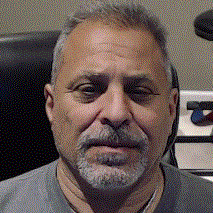-
Recently Browsing
- No registered users viewing this page.
-
Topics
-
Posts
-
Perhaps not where you live, but here in DK, you get by the taxman financially quartered if you order from outside the EUSR. These center wheel weren't that expensive 5 - 7 years ago, around $45-$50. I guess stock is drying up and these days we have to pay with worthless confetti money.
-
A little cleaned up, don't think I will polish the brass. Nice caramel color I think. Looks like the inscription says: Ludwig & Fries Frankfurt A.M. The lanterns were a little tweeked but able to gently flatten out with no breaks. The 6 and 7 pivot beds are broken but the rest of the beds are intact. Box and velvet a bit rough but still functional. Overall nice and just a bit larger than the one above. Why I need 2 I haven't figured out yet...
-
By ManSkirtBrew · Posted
Oh really, like my Seiko 6139? When I pulled out the crown it had 3 positions, so I assumed one position set the day/date. I'll check more closely when I put it back together. Thanks again!
-









Recommended Posts
Join the conversation
You can post now and register later. If you have an account, sign in now to post with your account.
Note: Your post will require moderator approval before it will be visible.